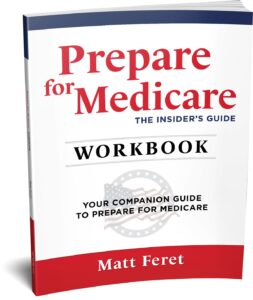If you’ve been fortunate enough to have good insurance most of your life, you may have gotten in the habit of picking up a prescription for $20, $15, or even a dollar without giving a second thought to it.
Look a little closer at your receipt, however, and you might notice it says something like, “Insurance saved you $934 on your prescription.” That’s right. Without insurance, that prescription would have cost you nearly a thousand dollars out of pocket . . . every month!
So what do you do if you enroll in Medicare and then find you can’t afford your prescriptions?
Options for Medicare Drug Coverage
Medicare doesn’t cover prescription drug expenses. In order to get those covered, you have to buy a Medicare Part D plan offered by a private insurer. This can either be a stand-alone Part D plan or a Medicare Advantage plan that includes supplemental medical and drug coverage.
Today, about 75% of all Medicare recipients are enrolled in Part D plans. Depending on where you live, there are tons of plans to choose from. You can find out more at the Medicare Plan Finder.
What Medicare Part D MUST Provide
By law, Medicare Part D must provide at least two options of drugs for the most commonly prescribed categories. It has to cover anticancer drugs, seizure medications, antidepressants, HIV/AIDs drugs, and immunosuppressant drugs, as well as most vaccines, including shingles and COVID-19.
Medicare Part B covers some other inoculations as well as some medications received in the doctor’s office or during a hospital stay. Medicare Part D will cover brand-name and generic prescription drugs, but your out-of-pocket expense will likely be greater with brand names. It does not cover over-the-counter medications.
The average monthly cost of a Medicare Part D premium in 2023 is $31.50 a month, and it more than pays for itself.
More Options
Getting on the prescription drug plan that’s right for you is the first step, but there are other things you can do to help reduce your medication expenses further:
- Make sure your pharmacist has your most recent insurance information on file and that your medicine purchase was run through your insurance. It may need to be run again.
- If your company has refused the insurance claim, phone them and ask why.
- Ask your pharmacist or your doctor if a lower-cost generic version is available.
- If your prescription needs a prior authorization from your doctor, have the pharmacy inform your doctor so that can be taken care of, rather than paying the out-of-pocket price yourself.
- If your medication is not covered by your plan, ask your doctor if there is another they could prescribe.
- Some states have programs to assist seniors with the cost of prescription drugs. Check out this list of State Pharmaceutical Assistance Programs to see if one is available in your state.
- Drug companies also have income-based Patient Assistance Programs to provide free or reduced-cost brand-name medicines. Here is a site where you can look up your medication to see if it qualifies: org/patients.
- Finally, you can use discount cards available free of charge at sites like com or HelpRx.com. These cannot be used in combination with insurance, but you might find on some prescriptions you will save more money by not using your insurance but paying out-of-pocket with a discount card instead.
Stretch Those Dollars!
Sometimes it seems like there are so many options, and so much jargon thrown around, you might feel like throwing up your hands and just paying whatever you’re charged.
Don’t do that, though! You’ve worked too hard in your life to overpay for your medicine when there are so many options to get the cost down to where it should be. Start with making sure you’re on a good Medicare drug plan, then talk to your doctor and pharmacist about the specific drugs you need and the options for making them affordable.
A little bit of work in the beginning will get your medicines set up the way they need to be, and get you on the path to healing and enjoying your life.






